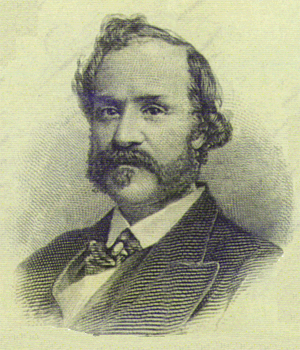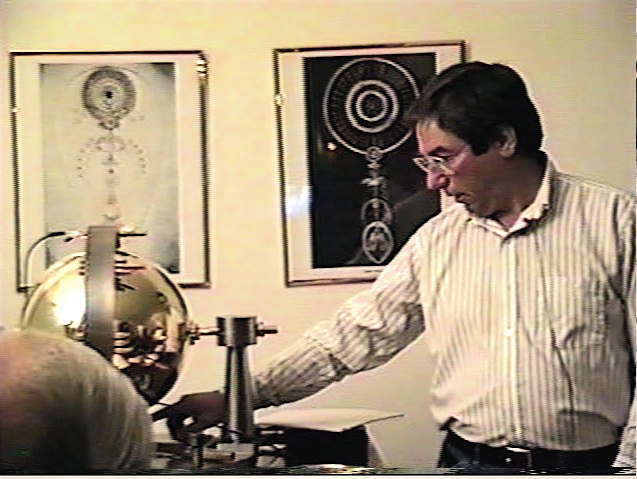| Check out the SVPwiki | SVP Cosmology 2.3 |

Sound -- A Mystery and a Magic
PART I
The Music Angels
by A. N. INGAMELLS
ONCE in the home of a friend and once during the celebration of the Christian Eucharist or Mass, have I heard the music of some other world. The following is what I wrote down of the experience at the time:
It was an intensity of sweetness difficult to describe . . . This music was like golden gossamer sound . . . It seemed far, far away, yet it was as if all the atoms of the brain were in intensely rapid and joyous vibration. The sound seemed very tiny compared with earths music, not melodic, in the sense in which we use that word, just a "riot" of inexpressibly sweet harmony. It was like myriads of tiniest golden bells all sounding in perfect harmony and unutterably sweet . . .
What follows, communicated in our day by a Deva to a sensitive Western musician should be of great value to us. The Deva said:
"You can summon your Deva by song. You can summon any Deva if you know his song. You can bring to your aid the whole celestial choir of Gandharvas if you call them to you. Remember that if properly summoned (by true, pure dedicated arts) the Devas must come. It is the call of their own "flesh." The arts are literally their earthly bodies. When they do not shine through the arts, it is because artists are not true, pure, holy enough . . ."
How may we come into touch with these beautiful forms of life ?
The first consideration will be the removal of hindrances. Controlled
emotion we must have. The giving up of flesh as food, and alcohol as
drink, is probably quite essential . . We must bear in mind that all
forms of life require their own peculiar conditions . . . The
practice of scientific meditation will gradually make a channel for
us to these fairer worlds by making active certain glands in the head
(the pituitary body and the pineal gland) and this will cause the
brain, at a certain stage of this practice, to record experiences
from the subtler worlds . . . The cultivation of good music, also,
must help us much, for it makes us sensitive and responsive to
subtler things . . . Great music is Theosophy . . . the Wisdom of the
Gods.
--From The Theosophist, December 1929
There are many people who realize that sound always generates color . . . Not everyone, however, knows that sounds also build form, just as thoughts do . . . It is not only the ordered arrangement of sound which we call music which produces definite form. Every sound in nature has its effect . . . The majestic roll of a thunderstorm creates usually a vast flowing band of color, while the deafening crash often calls into temporary existence an arrangement of irregular radiations from a center suggestive of an exploded bomb . . . The never ceasing beat of the sea upon the land fringes all earths coasts with an eternal canopy of wavy yet parallel lines of lovely changing color, rising into tremendous mountain ranges when the sea is lashed by a storm. The rustling of the wind among the leaves of the forest covers it with a beautiful iridescent network, ever rising and falling with gentle wavelike movement, like the passing of the wind across a field of wheat. Sometimes this hovering cloud is pierced by curving lines and loops of light, representing the song of the birds, like fragments of a silver chain cast forth and ringing melodiously in the air . . .
The tones of the human voice also produce their results . . . the
happy laughter of a child bubbles forth in rosy curves, making a kind
of scalloped balloon shape--an epicycloid of mirth . . . while the
jolly hearted kindly laugh of genuine amusement usually billows out
in rounded forms of gold and green.
--From The Hidden Side of Things
We have to see how . . . we may arrive at Patanjalis conclusion that the future man will understand the sounds of all living creatures, and that a Yogi may do so even now by extraordinary effort . . . And our conclusion, as will be seen, depends upon our true comprehension of the origin of language . . . The reader may at this point be perhaps usefully reminded of Patanjalis aphorism: "The word, the object, and the idea appear as one, because each coincides with the other."
There are at present three theories of the origin of language in the field.
1. The Onomatopoetic Theory. According to this the words of a language are imitations of the sounds of nature.
2. The Interjectional Theory. According to this roots are involuntary interjections . . .
3. The Max Muller (Ding Dong) Theory. Roots are phonetic types and embodiments of general ideas . . .
Now the sounds which produce vibrations in the srotra indriaya are twofold:
1. The sounds uttered by men. These are articulate sounds, which are letters, or are made up of several letters placed together.
2. The other sounds of nature: the sounds of birds and beasts, the sounds of winds and thunders, metals and rivers -- in fact, all the sounds of the mineral, vegetable and animal worlds.
The question how man came to utter articulate sounds is of a different nature. Here we have simply to understand the double nature of the sounds of the external world. Because it is this double nature of the sounds which will enable us in our future study to see the elements of truth that exist in the onomatopoetic and interjectional theories. Interjections are literal sounds -- expressions of articulate speech which express certain emotions of the utterer. Some of these exclamations we find expressing different emotions; there are others which express the same emotion always . . .
The vast majority of sounds which man hears comes from the
external world; and these sounds are heard equally by animals with
men . . . One important point with regard to the nature of animal
sounds may be considered here. All sounds besides possessing peculiar
forms, flows, temperatures, modes of motion, and notes, also possess
at the same time different tones. It is these tones that express
different emotions . . .
Under different conditions the sounds of animals differ in form,
flow, temperature, mode of action and note . . . All the needs of the
animal life -- hunger, thirst and other appetites of the body, and
all the passions -- anger, love, jealousy, have their tattvic values.
Sound represents all those appetites and passions faithfully, and it
only requires a cultivated ear to carry the fall impression of a
sound to the human mind.
To one who cultivates his sense of clear hearing (clairaudience), this sort of sonorous perception becomes clearer and clearer every day. When the mind begins to distinguish between the finer shades of form, temperature, flow, mode of action and note of the sounds of animals, then will sound begin to connect itself with the ideas of hunger, thirst, anger, love, in fact all the passions and appetites of the birds and beasts and of the human animal. The cries of animals will then begin to convey to the human mind the impressions of the needs of the lower animals. As every metal has its own peculiar ring, so has every passion and every appetite. Even now men can distinguish cries of pain, terror, anger, hunger, .etc., in a general way.
When the sense of hearing becomes more powerful and clear, their finer shades will begin to be sensed, and by the operation of the inductive canons of agreement,-- difference and residue, -- man will come to possess a language for describing and interpreting the cries of animals.
The language which we now speak is the result of the sonorous vibrations which our ears can catch at present. When we can catch the finer notes of sound, which are replete with the nature of the appetites and passions, accompanying their production and shaping, then we shall have a language which will express very much finer shades of meaning.
Thus by separating the three elements of language -- sound,
object, and idea -- we come to learn that the future of man as
foreshadowed by the past must unfold the power of hearing and
understanding.
-From The Theosophist, March, 1907.
Ones voice is the sound of ones spiritual quality. There is nothing in the world that can disguise the voice. It is personal, unique. Train it, place it, modify it as much as you may, it will still be your self speaking, and you will be known by it for what you are . . .
Laughter is a healing quality of the spirit and the voice that
holds trills of laughter comes like the sound of the harp and the
minstrel . . . That voice has in it the springtime of life, the sound
of the brook, the song of the birds, the wind in the meadows. It
lessens the weight of age and lends height to the flight of youth.
Blessed be the voice of laughter.
--ANGELO PATRI, in The Boston Herald
 |
||
 |